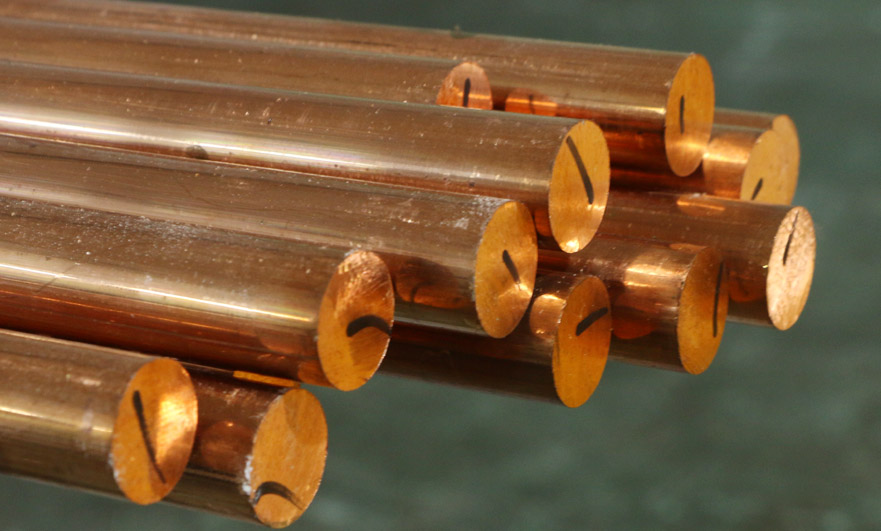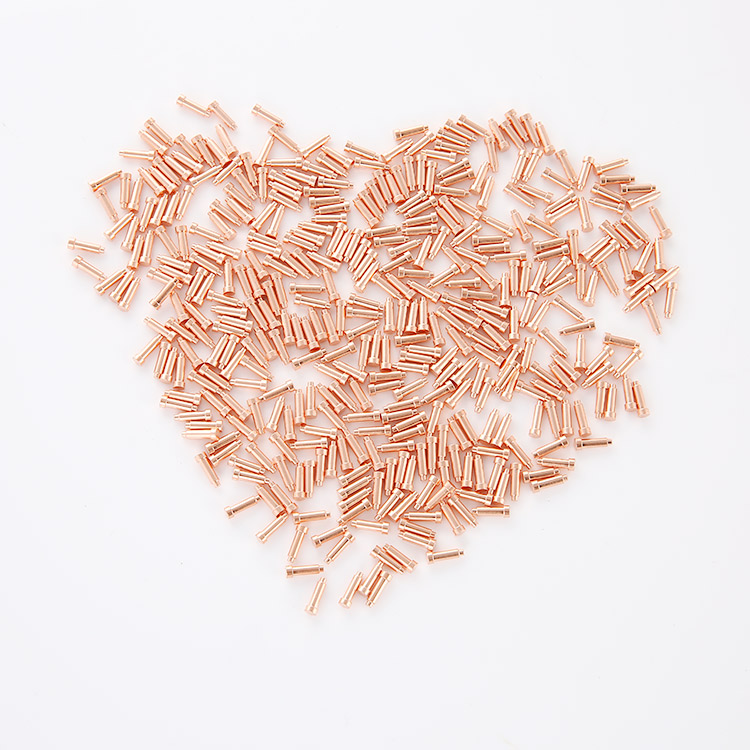15 years one-stop China custom CNC machining parts factory

Hey there I’m VMT Sam!
With 25 years of CNC machining experience we are committed to helping clients overcome 10000 complex part-processing challenges all to contribute to a better life through intelligent manufacturing. Contact us now
 425 |
Published by VMT at Dec 30 2022
425 |
Published by VMT at Dec 30 2022
Type of copper
Copper is divided into red copper, brass, white copper and bronze.
1. Copper: Copper is industrial pure copper. Because of its rose red color and purple color after the oxide film is formed on the surface, it is generally called red copper, also known as red copper. It is copper containing a certain amount of oxygen, so it is also called oxygen-containing copper, and sometimes it can also be regarded as a copper alloy.
2. Brass: Brass is an alloy composed of copper and zinc. Brass composed of copper and zinc is called ordinary brass. If it is composed of two or more elements, it is called special brass. copper. Brass has strong wear resistance, and brass is often used in the manufacture of valves, water pipes, connecting pipes for internal and external air conditioners, and radiators.
3. Cupronickel: Cupronickel is a copper-based alloy with nickel as the main additive element. It is silvery white and has metallic luster, hence the name cupronickel. Copper and nickel can be infinitely dissolved in each other to form a continuous solid solution, that is, regardless of the ratio of each other, it is always an α-single-phase alloy.
4. Bronze: Bronze is the earliest alloy in the history of metal smelting and casting. Adding tin or lead alloys to pure copper (copper) has special importance and historical significance. Compared with pure copper (copper), bronze has high strength and melting point Low (25% tin smelting bronze, the melting point will be reduced to 800 ° C. The melting point of pure copper (copper) is 1083 ° C). Bronze has good castability, wear resistance and chemical stability.

Copper and brass are two metal materials that are often mixed and used. Let's introduce the difference between the two.
What is copper?
Red copper is pure copper, also known as red copper, which is the simple substance of copper. It is named for its purple color. Various properties see copper. Red copper is industrial pure copper with a melting point of 1083°C, no allotropic transformation, and a relative density of 8.9, which is five times that of magnesium.
Red copper has good electrical and thermal conductivity, excellent plasticity, and is easy to process by hot pressing and cold pressing. It is widely used in the manufacture of wires, cables, brushes, electric corrosion copper for electric sparks and other products that require good electrical conductivity.

What is brass?
Brass is a copper alloy that contains a certain amount of zinc. In addition, brass can be added with other metals such as tin, iron, aluminum, lead, silicon and manganese. The addition of other metals can achieve unique properties, such as the zinc content in brass which contributes to the ductility and strength of brass-based copper materials. The higher the zinc content in the brass, the more elastic the alloy. Also, depending on how much zinc is added, its color can vary from red to even yellow.
Brass is mainly used for decoration because of its similarity to gold. It is also often used to make musical instruments due to its durability and workability.

The difference between copper and brass
Corrosion Resistance
Copper is easily rusted, and over time it oxidizes to develop a patina. The patina prevents further corrosion on the copper surface. Brass is more corrosion resistant and less likely to rust.
Conductivity
Red copper has excellent electrical conductivity, and is used as a measure of electrical conductivity, that is, the conductivity of red copper is defined as 100%, so as to measure the electrical conductivity of other metals. By this standard, the conductivity of brass is 28%.
Thermal Conductivity
The thermal conductivity of pure metals does not change with increasing temperature, while the thermal conductivity of alloys increases with increasing temperature. Therefore, the thermal conductivity of copper does not change and that of brass does.
Hardness
The hardness of a material refers to its ability to resist localized deformation. In terms of hardness index, the hardness of brass is 3-4, and that of red copper is 2.5-3, so brass is harder, and the higher the zinc content, the greater the hardness and toughness of brass.
Durability
The durability of a material refers to the ability of the material to maintain its function without undue repair or maintenance when faced with normal operational challenges during its half-life. Copper and brass are basically the same in durability.
Machinability
Machinability of a material means that the material can be cut to obtain an acceptable surface finish. This includes cutting, machining and die casting. Machinability can also be considered in terms of the manufacturing method of the material. In contrast, the machinability of brass is higher than that of red brass.
Weldability
Copper is easier to weld than brass, but brass with more than 20% zinc has good weldability. Finally, cast brass metal is nearly impossible to weld.
Color
The color of copper is reddish brown, and the color of brass is different according to the metal elements added, including gold, red gold or silver.
Density
The density of brass (8.93g/cm3) is mostly used as the lining of mechanical bearing bushes, which is wear-resistant. Brass castings are often used to make valves and pipe fittings.
Copper. Pure copper, also known as red copper, has a density of 7.83g/cm3}, a melting point of 1083 degrees, and is nonmagnetic.
Price
Copper is more expensive and brass fluctuates in price depending on the copper content.
In Conclusion
A comparison of copper and brass reveals the different properties of the two materials. It is therefore also easier to select the correct material. For CNC machining projects that don't know how to choose materials, come and contact us!
Ready To Start Your Next Project?
Get Instant Quote

Request a Free Quote
Send us a message if you have any questions or request a quote. We will get back to you ASAP!
